Sigma A 12-24 mm f/4 DG HSM
4. Image resolution
Still we are not interested by the results achieved by the primes in this category; the performance of the predecessor of the tested lens so the Sigma 12–24 mm f/4.5–5.6 II DG HSM and that of its direct rival, the Canon EF 11–24 mm f/4L USM is more important. Let’s remind here that the older Sigma provided similar resolution values at every focal length in the frame centre and it was completely useful already from the maximum relative aperture but without any spectacular achievements – its maximum MTFs reached about 35 lpmm. The Canon, on the other hand, was in a class on its own. Already at the maximum relative aperture it exceeded 40 lpmm and at the longer end of the focal range the MTFs got to almost 45 lpmm. The shortest focal length fared a bit weaker, with the maximum resolution reaching 43 lpmm.
Let’s check how the new Sigma compares – its results in the frame centre at 12, 18 and 24 mm are presented below.
Please Support UsIf you enjoy our reviews and articles, and you want us to continue our work please, support our website by donating through PayPal. The funds are going to be used for paying our editorial team, renting servers, and equipping our testing studio; only that way we will be able to continue providing you interesting content for free. |
- - - - - - - - - - - - - - - - - - - - - - - - - - - - - - - - - - - - - - - - - - - - - - - -
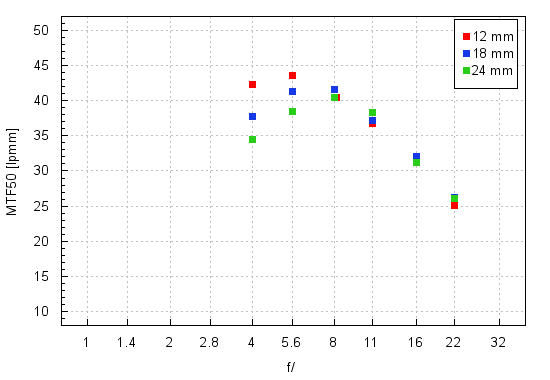
Firstly, it’s obvious the new Sigma is significantly better than its predecessor at practically every focal length. Secondly, its performance is opposite to that of the Canon; this time the best results you see at the shortest focal length where the lens is able to reach almost 44 lpmm, a splendid performance indeed. With the increase of the focal length the results worsen and the spherical aberration is to blame – next chapter is going to deal with that in more detail. Still even the longest focal length fares very well. Already at the maximum relative aperture the MTFs reach near 35 lpmm and they are able to exceed 40 lpmm on stopping down.
The edge of the APS-C sensor is weaker of course but, taking into account the angles of view offered by the lens, it still deserves to be praised.
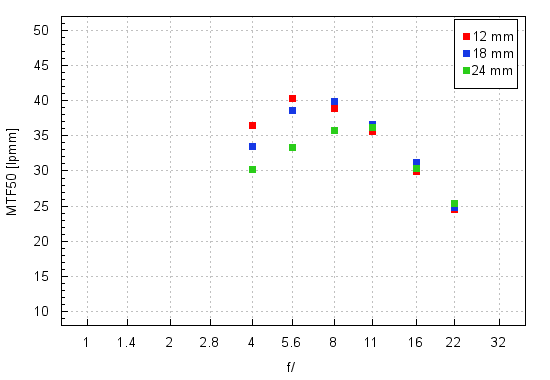
First of all the new model outclasses the slower predecessor which, on stopping down, was able to reach barely about 30 lpmm. Here even at the weakest combination of the maximum relative aperture and the maximum focal length the lens is able to reach the decency level. It is obvious the constructors looked after the 12 mm focal length the most, assuming that the shorter end of the focal range is what users of such a lens care about and you have to admit the performance in that place is really brilliant. Already by f/4.0 the resolution exceeds 36 lpmm and on slight stopping down the lens is able to exceed a very high value of 40 lpmm - the Sigma at 12 mm is actually better than the Canon 11-24 mm at 11 mm.
Now let’s check the very demanding edge of full frame –the appropriate graph is shown below.
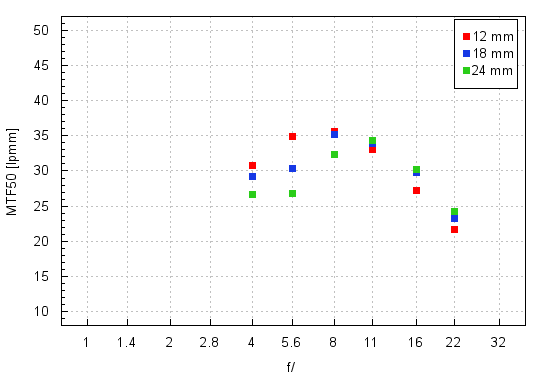
Once again the 12 mm focal length is the best – there are simply no weak points there. Even at the maximum relative aperture the image is sharp so the Sigma is able to defeat slightly the Canon. The middle of the focal range also doesn’t give you any reasons to complain – by f/4.0 and f/5.6 the lens is close to the decency level and by f/8.0 it reaches a good result, close to 35 lpmm. In this place, however, the new Sigma loses to the Canon because its focal range centre was actually the best on the edge of full frame. Also while examining the longest focal length you have something to complain about; only after employing f/6.3-f/7 apertures the images become useful.
To sum up the new Sigma is indeed better than its predecessor in every aspect; from time to time it is also able to compete successfully with the more expensive Canon EF 11-24 mm f/4L USM but, overall, it must be considered as a bit weaker in the resolution category despite its narrower focal range.
At the end of that chapter traditionally we present crops taken from photos of our resolution testing chart which were saved as JPEG files.
| Canon 5D MkIII, JPEG, 12 mm, f/5.6 |
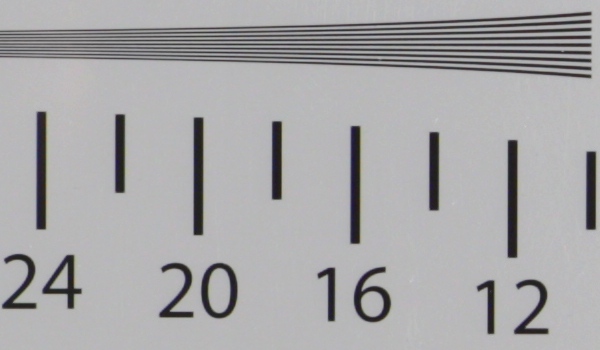 |
| Canon 5D MkIII, JPEG, 24 mm, f/4.0 |
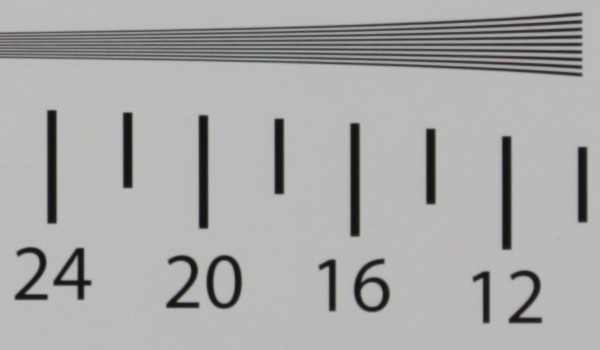 |






